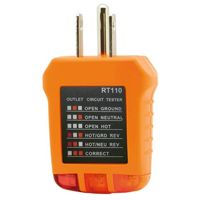Project details
Skill
Cost
Estimated Time
When you’re looking to buy a new house, it’s a good idea to go through the process to see what you’re getting yourself into. In this video, Master Electrician Heath Eastman talks all about electrical work and what you should look out for when prepping for a home inspection.
Inspecting the electrical work is an opportunity to get a sense of what you’ll have to work with and the things you’ll need to be mindful of when making improvements down the line. Heath walks you through what he would be looking at during a home inspection, so you can be better prepared for your own.
Steps for an Electrical Inspection:
Step 1: Check the electrical box outside
- A bad connection here could explain any issues inside.
- Look for any glaring problems like any corrosion on the wiring, exposed wires, a weak connection from the house to the power lines, etc.
Step 2: Look at the electrical panel
- The panel will help you understand how much power you’ll have available to you for any electrical additions you might want to make moving forward.
- Check the condition of the panel. Make note of any obvious signs of moisture getting in, rust, make sure that there are no holes, and that it is fully sealed.
- Look at the breakers to see if anything feels loose or warm to the touch.
- Make sure all the circuit breakers in the panel are the same. The breakers can’t be mixed and matched across manufacturers. Look at the label for more information. If there are any discrepancies there, you’ll need to replace those right away.
- Houses should no longer operate via fuses, so if you open up the panel and see a fuse box, look into getting it updated.
Step 3: Check the ground wire
The ground wire should be a certain size to protect the entire system and the house from any surges of power.
Step 4: Look for the type of wires you have in the building
- You can usually figure this out by looking in an unfinished basement to see what is attached in the joists.
- In older houses, don’t be surprised to find cloth wire as opposed to more modern Romex cable. As long as the jacket of the wire is in good condition, there is little cause for concern. However, keep in mind that if you plan to open up the walls for any reason, you’ll need to replace those wires with ones that are to code in order to pass a building inspection.
- Be wary of knob and tube wiring, as that will need to be replaced right away. Many insurance companies won’t even insure a house that still uses this kind of wiring.
Step 5: Check the general electrical fixtures and receptacles in the house
For the most part, you’re not going to notice any issues with fixtures unless there’s physical damage or a hanging fixture with an exposed wire, so just take a glance and make sure they look like they’re in good condition.
Step 6: Check receptacles
- For receptacles, check to make sure that all the ones in the basement, kitchen, and bathrooms are ground fault circuit interrupted—or GFCI—receptacles.
- The other place you might want to have a GFCI receptacle is in place of a GFCI receptacle is in place of a two-prong outlet. Two-prong outlets simply do not have a ground wire attached to them, so there is no protection from stray currents. You can either rewire the fixture or install a GFCI to get a similar result. Both are acceptable options according to code.
- If you’ve found some two-prong receptacles elsewhere in the house, it’s not a bad idea to use a voltage tester to see if any of the three-prong outlets in the house are ungrounded as well. The previous homeowners may have swapped the receptacles out without rewiring them.
- If you want to close up an old receptacle, the easiest way to do it is to install a closed cover plate. This protects the receptacle and makes it inoperable without having to do any additional wiring.
Resources
Home inspectors can usually help inspect the electrical in a house during the home inspection.
To test the receptacles to ensure they’re properly grounded, Heath used a voltage tester. The one he has is a RT110 Receptacle Tester by Klein Tools.

